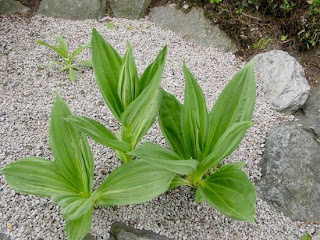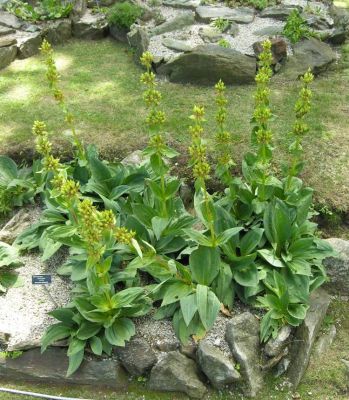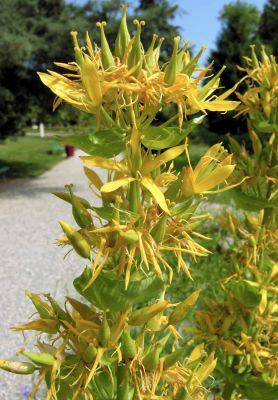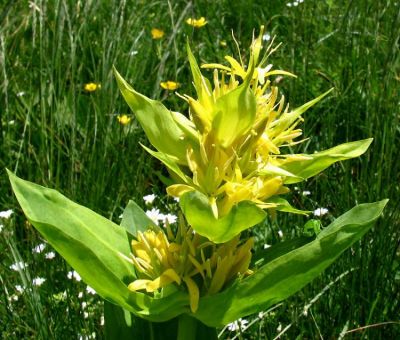(Gentina lutea)
---Gentian contains some of the most bitter substances known, particularly the glycosides gentiopicrin and amarogentin. The taste of these can be detected even when diluted 50,000 times.
--- This species is commonly used for medicinal purposes and to flavor alcoholic drinks (bitters). The root is harvested by digging up whole plants. Gentianae Radix is the pharmaceutical name of the root of Gentiana lutea.







Part used: root.
Properties: cholagogue, stomachic, tonic, anthelmintic.
What it affects: stomach, liver, blood, spleen, and circulation.
Preparation and amount:
Decoction: simmer 5-15 min. and take1/4-1 tsp 3 x a day to 1/2-1 cup daily.
Tincture: Take 1/2-2 tsp. 3 x a day.
Fluid extract: take 1/4-1/2 tsp 3 x a day
Powder: drink 2-4 #0 capsules (10-30 grains) 3 x a day.
Purposes
Internally, gentian primarily works on the liver and stomach. Because it is a bitter tonic herb, it quickens intestinal action and tends to overcome slow digestion. It improves the appetite, increases digestion, and improves circulation. It is best for pancreatitis, female problems, slow urination, colds and gout.
Note:
Because of its bitterness, combine gentian with aromatic herbs, such as ginger, peppermint, sassafras, spearmint, or wood betony.
Plant Description
This plant has a long, thick, cylindrical, wrinkled, ringed, forked, perennial root, brown externally, and yellow within, with a stem three or four feet high, hollow, stout, and erect; leaves ovate-oblong, five-veined, pale, bright green; the blossoms are large, of a bright yellow, in many-flowered whorls; and the fruit is a capsule, stalked oblong, and two-valved.
No comments:
Post a Comment